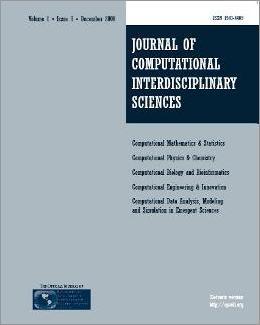
Editorial Office:
Management:
R. S. Oyarzabal
Technical Support:
D. H. Diaz
M. A. Gomez
W. Abrahão
G. Oliveira
Publisher by Knobook Pub


Editorial Office:
Management:
R. S. Oyarzabal
Technical Support:
D. H. Diaz
M. A. Gomez
W. Abrahão
G. Oliveira
Publisher by Knobook Pub
doi: 10.6062/jcis.2013.04.01.0067
N.A. Leite, O.E. Barcia, O.R. Mattos, J. Pontes and N. Mangiavacchi
AbstractThis work investigates the behaviour of the hydrodynamic transfer function of Rotating Disk Electrode (RDE) obtained with the hydrodynamic and mass transfer equations coupled through the dependency of the viscosity on the concentration of a chemical species in the electrolyte, which originates from the dissolution of iron electrodes in the 1MH2SO4 electrolyte solution. The results are compared with those obtained for constant viscosity and for the case where a viscosity profile depending on the distance to the electrode surface is imposed, decoupling the hydrodynamic and mass transfer equations. The results show that the existence of a viscosity gradient in the neighborhood of the RDE affects the hydrodynamic transfer function and changes increase with the increase of the perturbation frequency imposed to the angular velocity of the electrode. The coupling between the concentration and the hydrodynamic fields introduces a dependency of the transfer function on the Schmidt number. And higher viscosity gradients, or Schmidt numbers reduce the phase angle delay of the transfer function for a given perturbation frequency p, in comparison with systems with constant viscosity.
corrosion, electro-hydrodynamic impedance, rotating disk electrode.
[1] LEVICH VG. 1962. Physicochemical Hydrodynamics, Prentice Hall, Englewood Cliffs, NJ.
[2] RIDDIFORD AC. 1966. Advanced Electrochemistry and Electrochemical Engineering, Vol. 4, P. Delahay and C.W. Tobias, Editors, p. 47, Interscience, New York.
[3] ARVIA AJ & MARCHIANO SL. 1971. Modern Aspects of Electrochemistry, Vol. 6, J.O’M. Bockris and B.E. Conway, Editors, p. 159, Plenum Press, New York.
[4] NEWMAN J. 1973. Electrochemical Systems, Prentice Hall, Inc., Englewoods Cliffs, NJ.
[5] TRIBOLLET B & NEWMAN J. 1983. J. Electrochem. Soc., 130: 2016.
[6] NEWMAN J. 1968. Ind. Eng. Chem., 7: 514.
[7] BARCIA OE, MATTOS OR & TRIBOLLET B. 1992. J. Electrochem. Soc., 139: 446.
[8] BECK TR. 1982. J. Electrochem. Soc., 129: 2412.
[9] PODESTAJJ, PIATTIRCV & ARVIA AJ. 1979. J. Electrochem.Soc., 126: 1363.
[10] JENKINHDB &MARCUS Y. 1995. Chem.Rev. (Washington, D.C.), 95: 2695.
[11] ESTEVESMJC, CARDOSO MJEM & BARCIA OE. 2002. Ind. Eng. Chem. Res., 41: 5109.
[12] CALABRESE BARTON S & WEST AC. 2001. J. Electrochem. Soc., 148: A381.
[13] BARCIA OE, MANGIAVACCHI N, MATTOS OR, PONTES J & TRIBOLLET B. 2008. J. Electrochem. Soc., 155: D424.
[14] PONTES J, MANGIAVACCHI N, BARCIA OE, MATTOS OR & TRIBOLLET B. 2007. Phys. Fluids, 19: 114109.
[15] VON K´ARM´AN T. 1921. Z. Angew.Math. Mech., 1: 233. [16] ORAZEM ME & TRIBOLLET B. 2008. In: Electrochemical Impedance Spectroscopy, JohnWiley & Sons, New Jersey.
[17] FERREIRA JRRM, BARCIA OE, MATTOS OR & TRIBOLLET B. 1994. Electrochim. Acta, 39: 933.
[18] GERALDO AB, BARCIA OE, MATTOS OR, HUET F & TRIBOLLET B. 1998. Electrochim. Acta, 44: 455.
[19] ABRAMOWITZM & STEGUN IA (Eds.). 1972. Handbook of Mathematical Functions with Formulas, Graphs, and Mathematical Tables. New York: Dover.
[20] ORAZEM ME & TRIBOLLET B. 2008. Electrochemical Impedance Spectroscopy, Volume 48 de The ECS Series of Texts and Monographs. Editora Wiley.